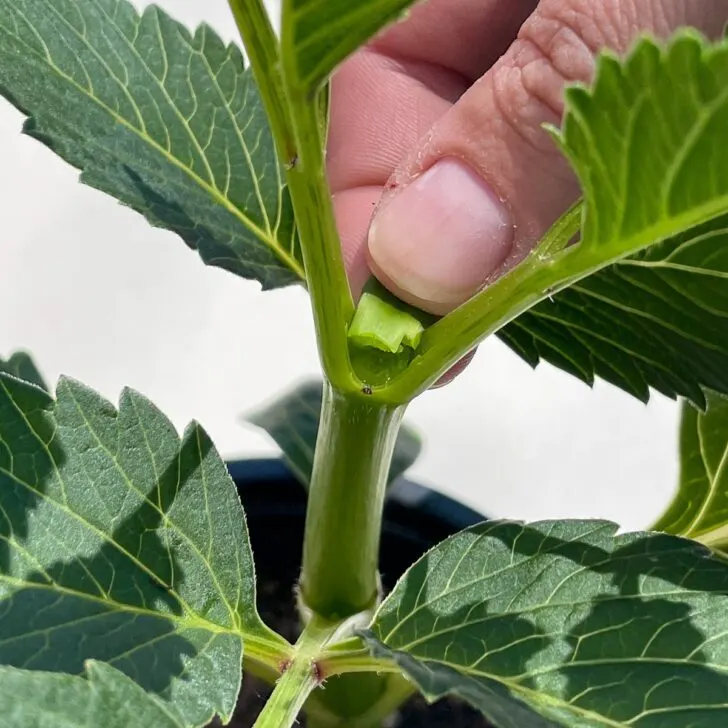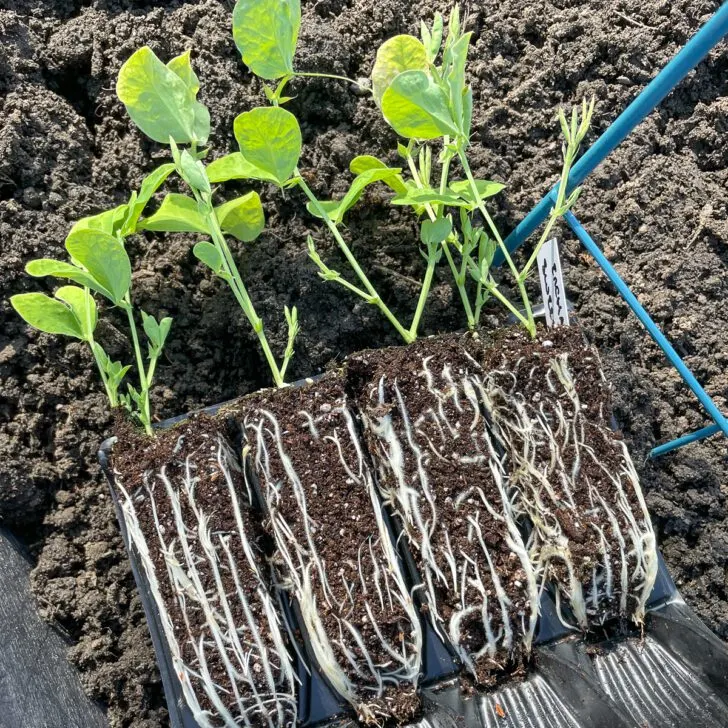Learn how to fertilize impatiens for constant blooms all summer long! This guide includes fertilizing techniques and my recommended brands.
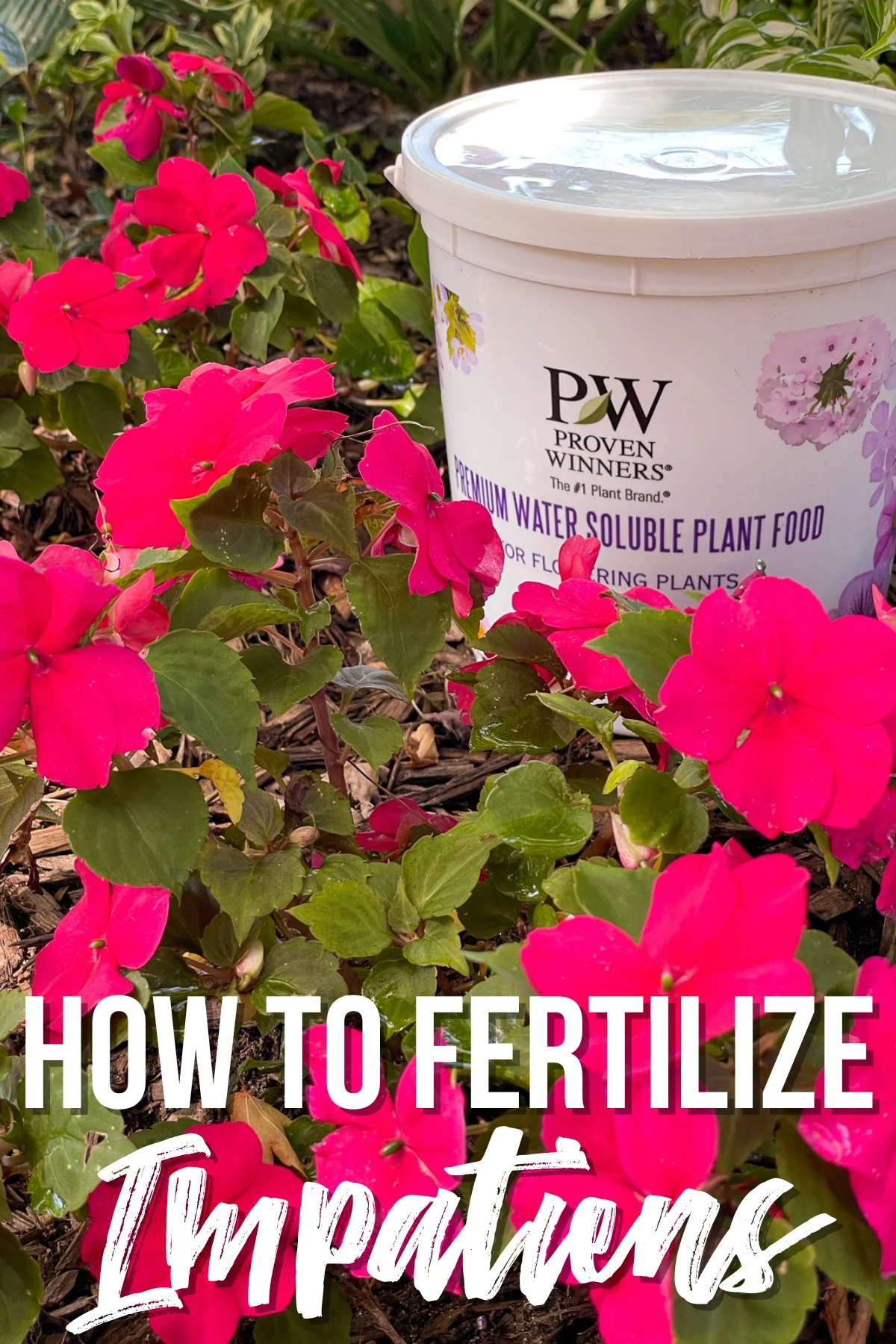
Impatiens are a great way to add pops of color to a shade garden. They're pretty forgiving for those of us who may not boast a perfect gardening track record, but you may have noticed the blooms starting to fade by mid-summer. What gives?
Just like we need our morning coffee and a balanced diet to keep us going, impatiens need a solid feeding regimen to bloom their best.
But what's the best fertilizer for impatiens, and when should you apply it? In this article, I'll go over which one to choose and how to feed your impatiens throughout the growing season.
This post contains affiliate links for your convenience. Purchases made through these links may earn me a small commission at no additional cost to you.
Types of Fertilizers for Impatiens
There are several things to consider when choosing a fertilizer for your impatiens. Here's a few things to keep in mind.
Understanding Fertilizer Numbers
There are so many fertilizers on the market today, so how do you choose the right one for your impatiens? It all comes down to three important numbers.
- Nitrogen (N): This nutrient promotes robust, leafy green growth. If your impatiens are looking a bit pale and lanky, they might be hinting at a nitrogen deficiency.
- Phosphorus (P): Think of phosphorus as the bloom booster. It encourages strong root development and those vibrant, colorful flowers we all love. Sparse or underwhelming blooms? Phosphorus might be what you're missing.
- Potassium (K): The overall plant health enhancer. It plays a role in many plant processes and helps them fight off diseases.
Most quality fertilizers come packed with a mix of these nutrients. The key is to understand what your impatiens are telling you and to give them what they need.
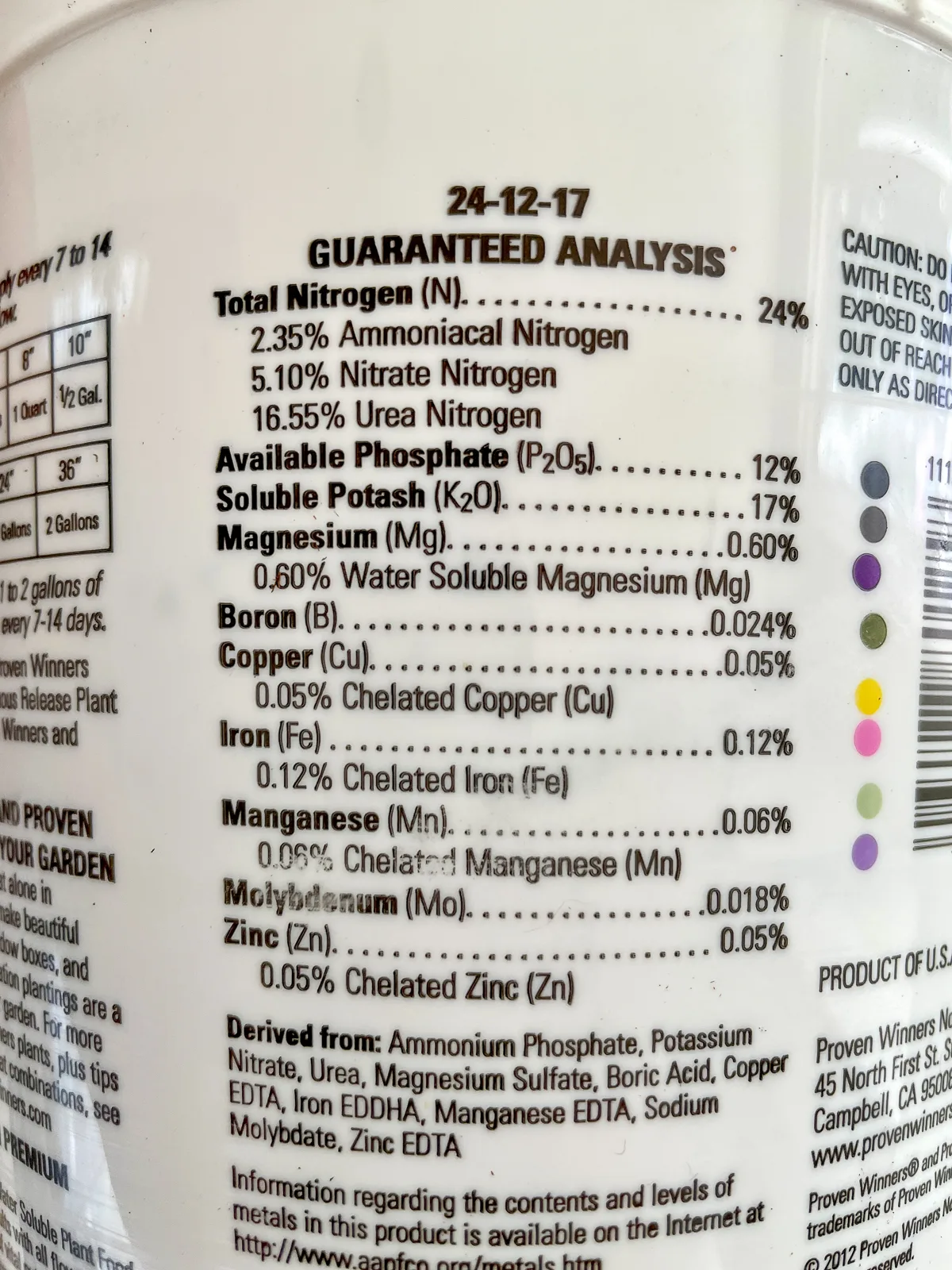
Want more blooms? Choose a fertilizer with a higher middle number (phosphorous). Want that deep, dark green foliage back? Pick one with a higher first number for more nitrogen.
Organic vs. Synthetic Fertilizers
Organic fertilizers are derived from plant, animal, or mineral sources. Think fish emulsion, compost, bone meal, and worm castings. These tend to release nutrients slowly, feeding plants over a longer time. They're also great for enriching the soil structure.
I use organic Espoma slow release fertilizers in my garden twice a year. This gives my plants a constant source of nutrients and helps to enrich the soil over the growing season.
Synthetic fertilizers are the lab-made varieties. They can provide a quick nutrient boost, and you can find them tailored for specific plant needs. However, they might not do much for your soil's long-term health.
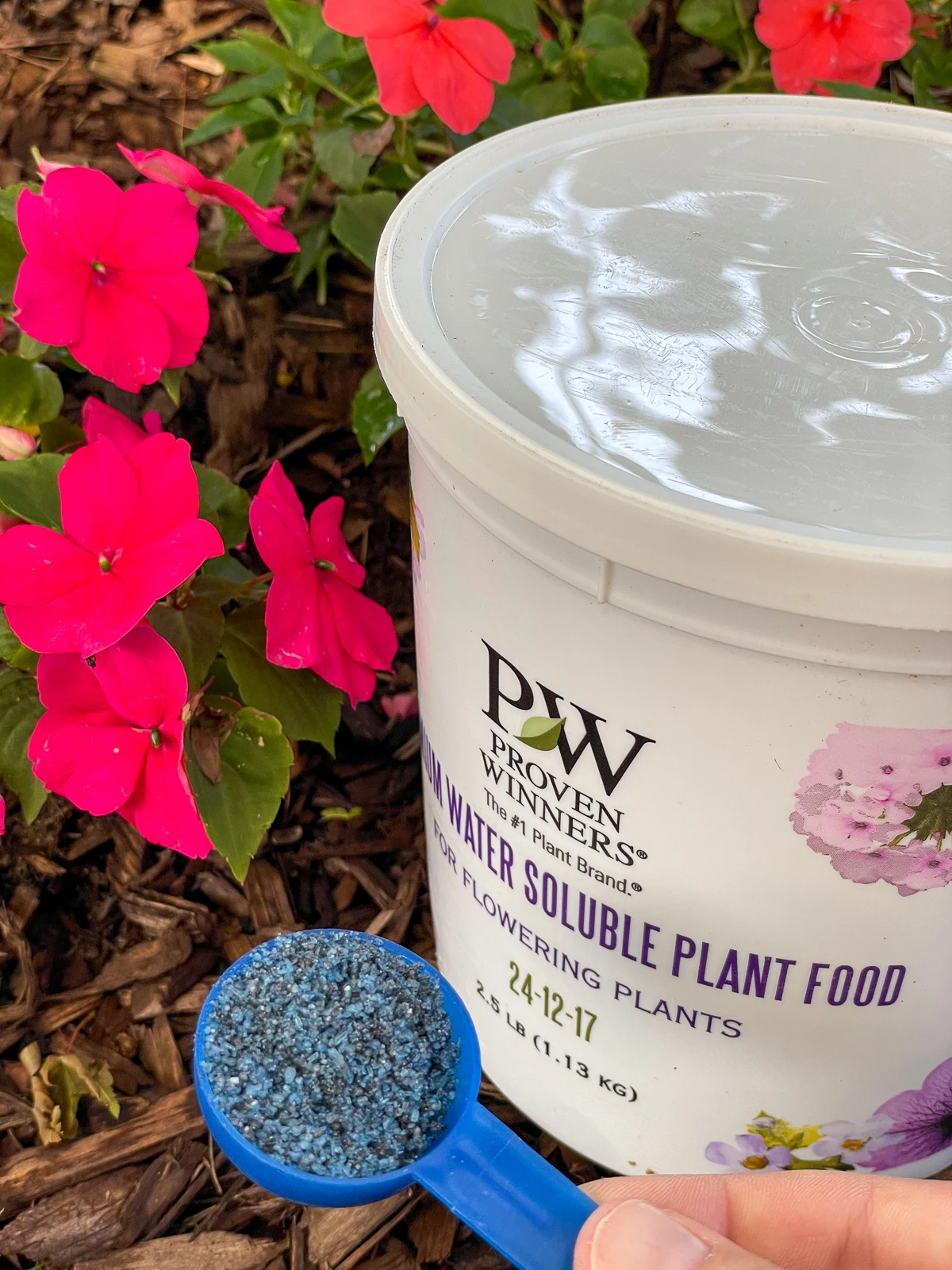
I use Proven Winners synthetic water soluble fertilizer for my bi-weekly feedings. It doesn't have a horrible smell like most organic water soluble fertilizers, so I'm more inclined to actually use it! There's nothing worse than the stench of bat guano or fish poop accidentally spilled on your shoes!
Liquid vs. Granular Formulations
Liquid fertilizers are diluted in water and given to plants either via their roots (soil drench) or leaves (foliar feed). They offer a rapid nutrient uptake, perfect for when your impatiens are signaling an SOS for nutrients.
Granular fertilizers are sprinkled on the soil and release nutrients as they break down. Depending on the type, they can feed plants over weeks or even months. These are great for a steady, long-term nutrient supply, especially if you tend to forget this important task over a long summer!
Proper Fertilization Technique
After you've chosen the fertilizer for your impatiens, you'll need to know when and how often to use it.
When to Fertilize Impatiens
At Planting Time: Giving impatiens a little starter fertilizer when you're transplanting them can help them develop a strong root system that will benefit the plant later on. I always add a handful of Bio-Tone Starter Fertilizer to the planting hole.
Over the Growing Season: As impatiens grow and bloom, they use up the nutrients in the soil and need more food to thrive. Container and window box plantings require more consistent fertilization than in-ground plantings because of the limited soil.
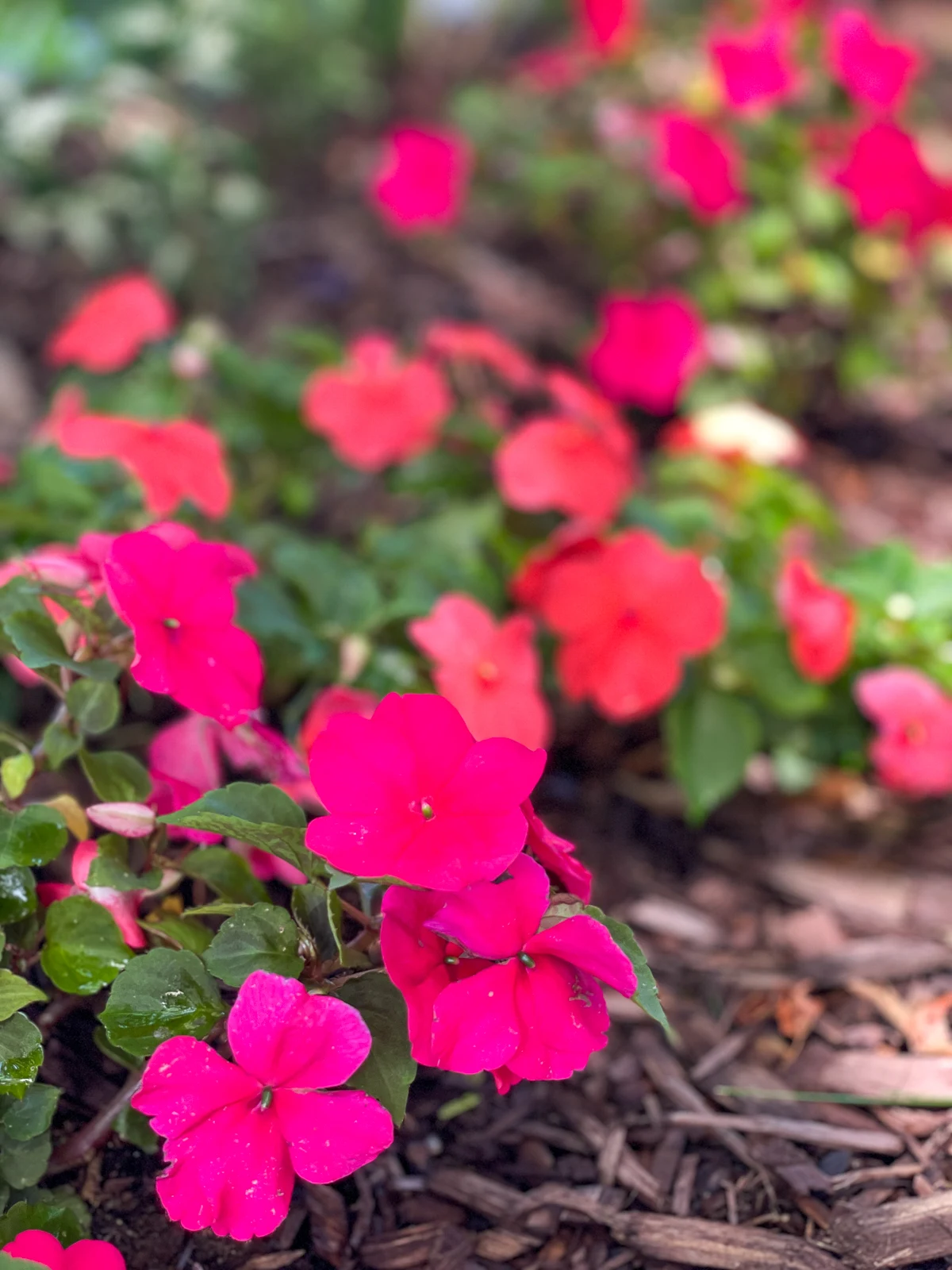
How Often to Fertilize
For Quick-release Fertilizers: Since they provide nutrients rapidly but for a shorter duration, you might need to apply them every 2-4 weeks during the growing season.
I give most of my annual flowers, including impatiens, a dose of Proven Winners water-soluble fertilizer every other week to keep them looking their best. Set a reminder in your phone or on the calendar so you don't forget!
For Slow-release Fertilizers: These fertilizers break down over time, so you might only need to apply at the beginning of the season or perhaps once more midway. I use Bio-Tone starter fertilizer at planting time and Flower-Tone in mid-July for a long lasting boost.
Fertilizer Application Methods
This might sound obvious, but following the directions on the label is key. Brands will often give you precise measurements for your plant's needs. Going overboard can harm your impatiens just as much as giving too little.
For Granular Formulas: Sprinkle evenly around the base of the plant, avoiding direct contact with the stems. I like to scratch it into the soil with my fingers or a rake afterwards so it can work its way down into the soil instead of sitting on top of the mulch. Water after applying to help the granules break down and release their goodness into the soil.
For Liquid Formulas: Mix as directed, and water your impatiens at the roots. I just dump a spoonful of the water-soluble crystals into a watering can, then use the pressure of the hose to mix it up in the water. Some formulas can also be sprayed directly onto the leaves for a quick nutrient boost.
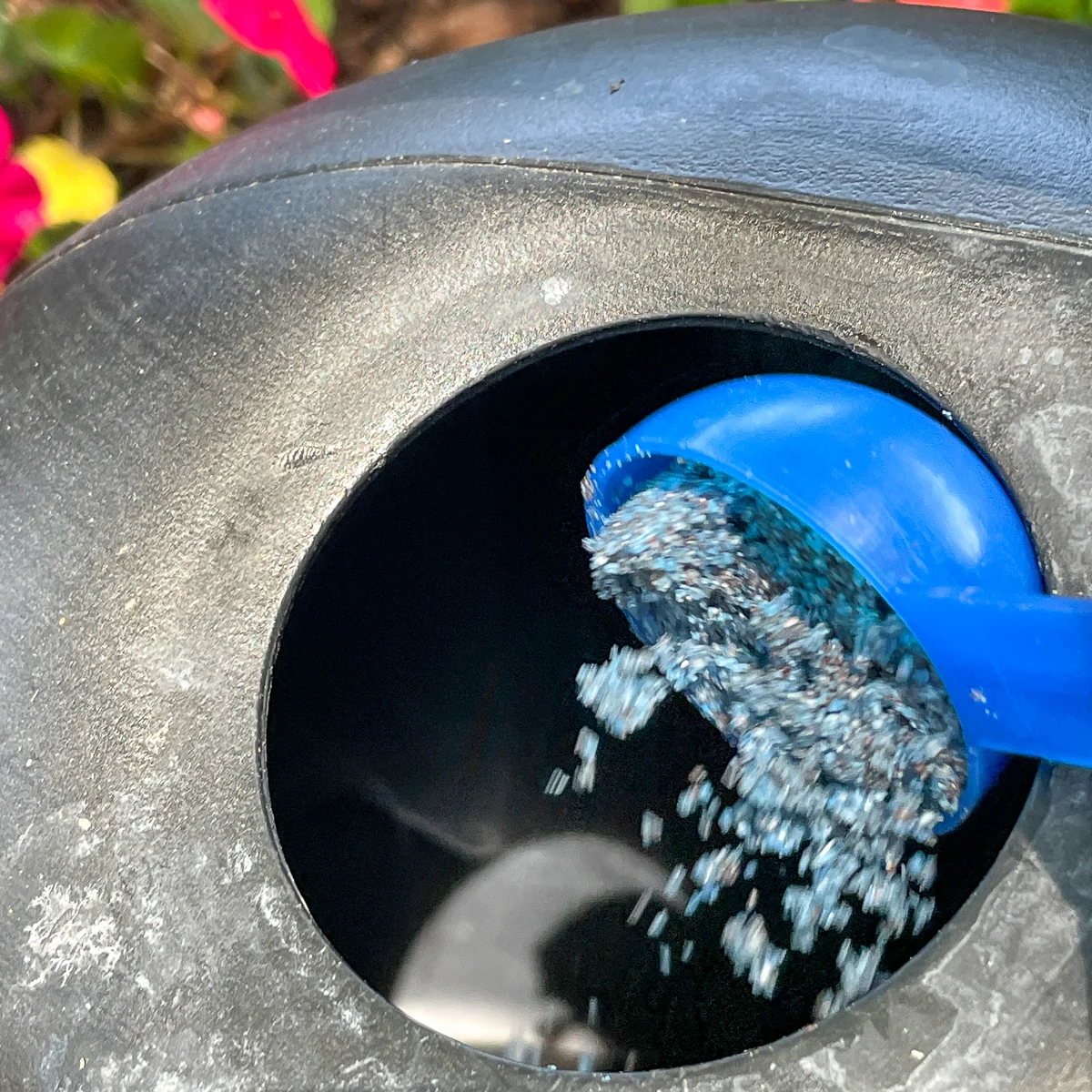
Keep an Eye on the Weather
If you know there's a heavy rain forecasted, you might want to hold off on fertilizing. Rain can wash away the nutrients, especially if you're using a quick-release formula.
Fertilizing during a very hot day can stress your impatiens. The water in quick release formulas can evaporate too quickly, causing the fertilizer on the leaves to burn. It's better to feed in the cooler early morning or late afternoon.
Common Mistakes to Avoid (And How to Fix Them)
While we've covered the how-to's, it's essential to discuss a few potential pitfalls. Because let’s face it, even the most seasoned gardeners make mistakes! Here's a list of common problems you might notice and how to navigate around them.
Over-fertilizing
- Signs: Burnt leaf edges, wilted leaves, or excessive growth without much flowering.
- Fix: If you suspect you've overdone it, give the plant a good watering to flush out excess nutrients. Going forward, stick to recommended amounts and schedules.
Under-fertilizing
- Signs: Pale leaves, less blooms, or weak and leggy stems.
- Fix: Start a regular fertilizing routine, targeting the nutrients that will correct the issue.
Using the Wrong Type of Fertilizer
- Signs: If your impatiens are showing signs of nutrient deficiencies (like yellow leaves or lack of blooms), you might not be giving them the right mix.
- Fix: Revisit your soil test and the N-P-K values on your fertilizer. Adjust accordingly, opting for a product tailored to flowering plants.
Ignoring Soil pH
- Signs: Even with adequate nutrients, if your impatiens aren't thriving, the soil pH might be off.
- Fix: Modify your soil's pH. Impatiens require slightly acidic soil, and a quick pH test can tell you if yours isn't in the recommended range (6.0-6.5). For overly acidic soils, add lime. For alkaline soils, consider adding sulfur or organic matter like composted leaves.
Fertilizing at the Wrong Time
- Signs: Plants aren't responding well to the feed, especially during extremely hot or cold temperatures.
- Fix: Stick to early morning or late afternoon for fertilizing. Avoid feeding right before intense rain, which will just wash it away.
Neglecting Watering After Fertilizing
- Signs: Fertilizer just sitting on the soil surface or impatiens looking a bit dehydrated after a feed.
- Fix: Always water after applying granular fertilizers. It helps in nutrient absorption and protects plants from potential fertilizer burns.
Troubleshoot with Soil Testing
If you've been fertilizing regularly and still aren't getting the results you want, you may want to do a soil test. This will help figure out what your soil is packing – or lacking, for that matter.
Once you get your results, you'll see values for pH, N, P, K, and possibly more. But what does it all mean?
pH Balance: This measures how acidic or alkaline your soil is. Impatiens usually prefer slightly acidic soils, around a pH of 6.0 to 6.5. If your soil is out of this range, it can affect how your plants absorb those essential nutrients.
Nutrient Levels: The numbers will show whether you have low, medium, or high levels of the main nutrients. From here, you can figure out what kind of fertilizer your impatiens will require.
Now that you know how to fertilize impatiens, your garden will be full of blooms all summer long! While you're at it, why not take a few cuttings and try propagating impatiens for more plants!
Check out these other plant care tutorials!


